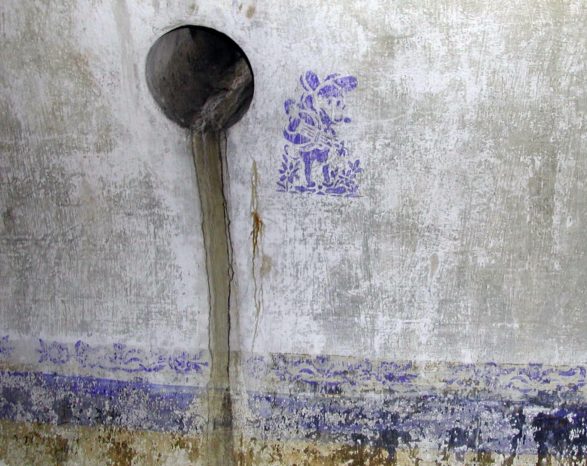Ruaya Refuge
The refuge has two entrances, one located on the north side and the other on the south arranged in a symmetrical way. It is accessed through a staircase (only the one at the southern access has been well documented) that has a width of 120 cm. with a first section composed of 10 steps made of tile, 120 cm. length by 34 cm. wide and 18 cm counterprint. Each step has an iron corner of about 6 cm. wide. This first flight of stairs ends on a quadrangular landing from which runs a new section composed of 10 other steps, perpendicular to the previous section. At the end of the stairs there is a small rectangular landing and inside you can see different rooms. The central part is divided into three naves arranged longitudinally in a north-south direction. All three have the same dimensions and distribution. The roof is vaulted with tiles, like the walls, with a concrete coating, where successive layers of paint can be seen. In each nave there are benches running around its perimeter. To the north there is access to another room also with a rectangular floor plan but this time oriented in an east-west direction. This room has a perimeter bench on all its sides, opening to an auxiliary room at its eastern end, also with a running bench.
The main room has a decorative border, with floral motifs in blue tones at a medium height, next to a drawing of a children's cartoon character (Mickey Mouse), at the top of it. This motif is also repeated on each of the walls of the room. This children's motif is made with a stencil painted in blue tones.
In addition to these rooms, the refuge presents in its northern part, another small room on the walls of which you can see remains of white tiling and which must have corresponded to the toilet of the refuge.
Another room is also preserved next to the south entrance that, due to the preserved remains, could serve as a kitchen, although perhaps it was used for this purpose when the shelter was already out of service and was used as a temporary housing.
The floor is formed by a powerful concrete floor. In relation to the ventilation system, circular section respirators can be seen on all the walls of the different rooms, forming three parallel lines in each of the vaults. Some of these vents were located outside the shelter when they discovered the protective flooring of the roof.
The whole complex is covered by a powerful layer of concrete that exceeds the space occupied by the shelter itself. The upper elevation of the construction is 16.3m. above sea level.
As for the capacity of the shelter, it would shelter most of the residents of the neighborhood, because this seems to be attested by the fact that the access was in the street and not inside a private building.
After the war, according to oral testimony, the shelter was occupied by different families and later the entrances were boarded up, leaving an access trapdoor. With the remodeling of Ruaya street , the shelter has been left under the pavement of this.


Dades bàsiques
Ruaya Street
46009 Valencia